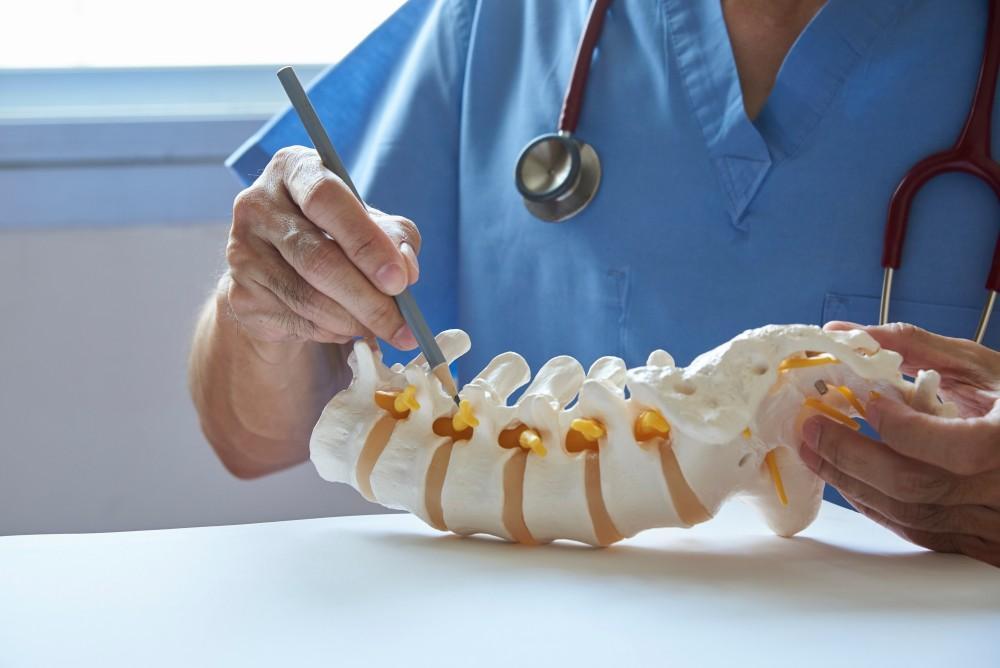
Understanding the Two Main Types of Spinal Stenosis

Your spine is made up of 24 interlocking bony vertebrae, each separated by an intervertebral disc that both cushions the spine and allows you to bend. The combination forms a hollow tube, which runs the spinal cord and other associated nerves that exit the canal and extend to various parts of the body.
Spinal stenosis is a condition where parts of the tube narrow, reducing the amount of space for the nerves. Depending on where the narrowing occurs and how much it reduces the epidural space, the nerve roots in that region may become impinged, leading to radiating pain, numbness and/or weakness, and tingling.
A great example of such an impingement is sciatica, where the sciatic nerve that exits the spine between the L4-L5 and/or L5-S1 vertebrae in the lower back becomes compressed. The pain travels along the nerve’s path, radiating into the buttocks and down the outside of the leg.
Board-certified neurosurgeon Dr. Kamal R. Woods at Vertrae® notes that up to 95% of men and women suffer some degenerative changes in their backs by the time they reach age 50. Those changes can lead to spinal stenosis and resulting nerve compression. That's why Dr. Kamal and his team in Dayton and Springfield, Ohio, offer several treatment options, all designed to relieve your pain and let you move forward with your life.
Understanding the two main types of spinal stenosis
The spine can be divided into four separate regions:
- Cervical (neck)
- Thoracic (chest)
- Lumbar (lower back)
- Sacroiliac (tailbone)
Stenosis comes in two types:
1. Foraminal stenosis (lateral stenosis)
The intervertebral foramen is the opening between two vertebrae where a spinal nerve exits the canal and travels to other body parts. When one or more foramina narrows, it’s called foraminal stenosis. Because there’s less space for the nerve to pass through, that nerve may become pinched, painful, or dysfunctional.
While foraminal stenosis can occur anywhere in the spine, it’s most common in the lumbar spine, followed by the cervical spine. It’s extremely rare in the thoracic spine.
Lateral stenosis is a term often used interchangeably with foraminal stenosis because both refer to stenosis that occurs to the side (laterally) of the spinal canal.
2. Central canal stenosis
The central canal is the main tunnel in the center of each vertebra that houses and protects the spinal cord down the length of the spinal canal. When this tunnel narrows, it’s called central canal stenosis. When such narrowing of the central canal occurs in the cervical and thoracic spine, the spinal cord itself can get bruised, leading to pain or dysfunction anywhere in the body below the level of compression. When such narrowing occurs in the lumbar spine, it leads to pain with standing and walking. Often, the pain is not as bad when sitting. Some people also get relief from leaning on a shopping cart at the grocery store.
Central canal stenosis can also occur anywhere in the spine, but it’s most common in the lumbar and cervical spines.
Treating spinal stenosis
Dr. Woods always starts with conservative treatment options, which may include any of the following:
- Pain medications
- Physical therapy
- Steroid injections
- Ultrasound
If conservative treatments fail, the doctor may recommend minimally invasive surgery to fix the problem and give you relief. Two common procedures include:
Laminectomy
This procedure is the most common surgical option for spinal stenosis. Dr. Woods makes a small incision in your back, through which he removes any bony growths (spurs) and thickened ligament to create enough space for your nerves to function normally.
Foraminotomy
Dr. Woods expands the foramina in the vertebrae where the affected nerve roots exit.
Spinal stenosis is a possible culprit if you’re experiencing back pain, especially if you’re middle-aged or older. To get an accurate diagnosis and effective treatment, contact Vertrae to schedule a consultation with Dr. Woods. Call either our Dayton or Springfield, Ohio, location at 844-255-2225, or book online with us today.
You Might Also Enjoy...


5 Common Signs of a Compression Fracture

Using Your Own Platelet-Rich Plasma to Alleviate Your Back Pain

A Closer Look at Your Sacroiliac Joint

4 Benefits of Outpatient Spine Surgery

